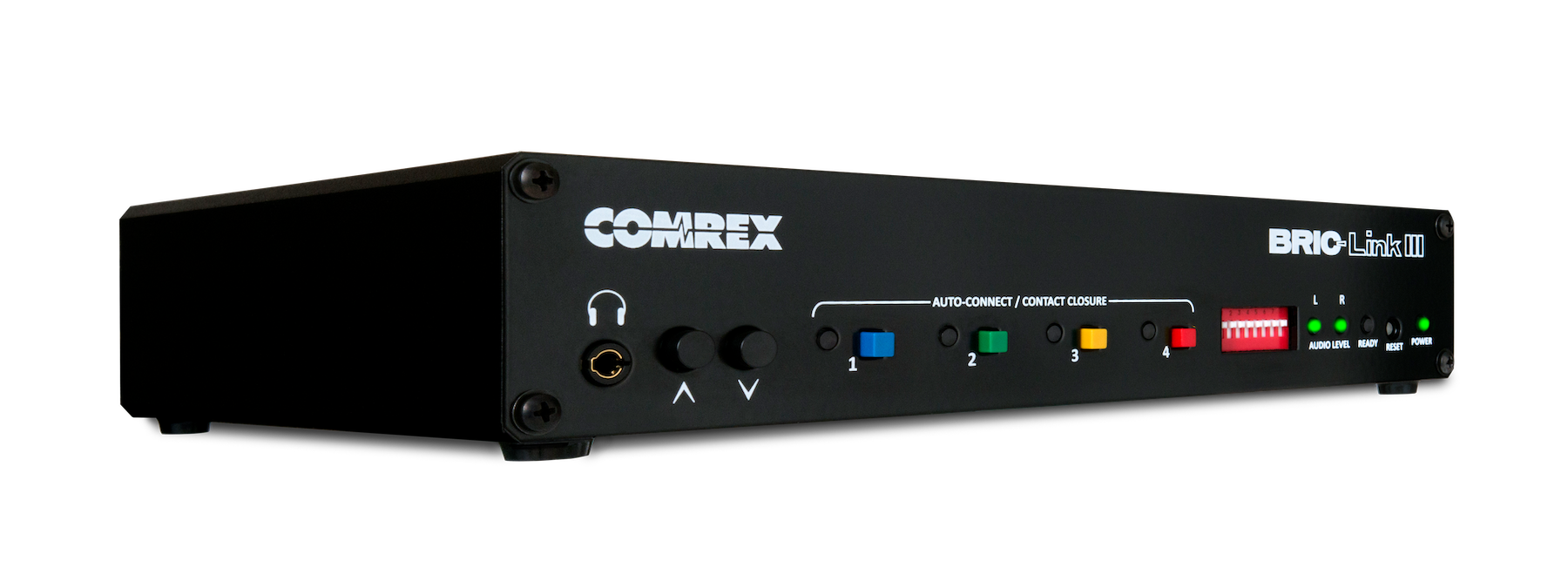Comrex Unveils BRIC-Link III IP Audio Codec
The new codec offers a full-duplex stereo encoder and decoder in each unit

DEVENS, Mass.—Comrex has announced BRIC-Link III, the latest addition to is BRIC-Link family of codecs first debuted at the 2022 NAB Show in April.
BRIC-Link III is an updated version of the codec that takes advantage of the latest improvements in IP audio transmission technology, the company said.
A true codec, BRIC-Link III offers a full-duplex stereo encoder and decoder in each box. A jitter buffer manager is incorporated that automatically balances delay and stability, dynamically increasing and decreasing delay based on network performance. BRIC-Link III offers a wide range of encoding algorithms, including stereo and mono linear mode, FLAC modes,
AAC/HE-AAC modes, Opus, G.722 and G.711, the company said.
Compatible with all Comrex IP audio codecs, BRIC-Link III also works with Gagl, a new audio contribution service available for purchase. Gagl turns any Comrex IP audio codec into a hub for up to five remote participants, it said.
BRIC-Link III includes CrossLock VPN technology, Comrex’s proprietary suite of reliability tools. In addition to bonding technology, CrossLock also includes a Redundancy Mode for mission-critical applications. BRIC-Link III can take advantage of HotSwap, meaning users can set a 4G/5G modem as a backup connection to only be engaged when the primary internet fails, it said.
An optional license to use the Comrex SwitchBoard private server that enables easy connections between IP codecs is available as a one-time purchase per codec, it said.
Get the TV Tech Newsletter
The professional video industry's #1 source for news, trends and product and tech information. Sign up below.
With a user-friendly HTML 5-based interface, BRIC-Link III has a compact chassis and can easily fit into a studio setup. A dual rack kit accessory for housing two BRIC-Link III codecs on a rack shelf side-by-side will be available for purchase, the company said.
Multiple operating modes, including normal (UDP), HTTP (Streaming Server, Icecast/Shoutcast, Multistreaming), RTP, TCP, IP Multicast and EBU 3326/SIP are available, it said.
More information is available on the company’s website.
Phil Kurz is a contributing editor to TV Tech. He has written about TV and video technology for more than 30 years and served as editor of three leading industry magazines. He earned a Bachelor of Journalism and a Master’s Degree in Journalism from the University of Missouri-Columbia School of Journalism.

